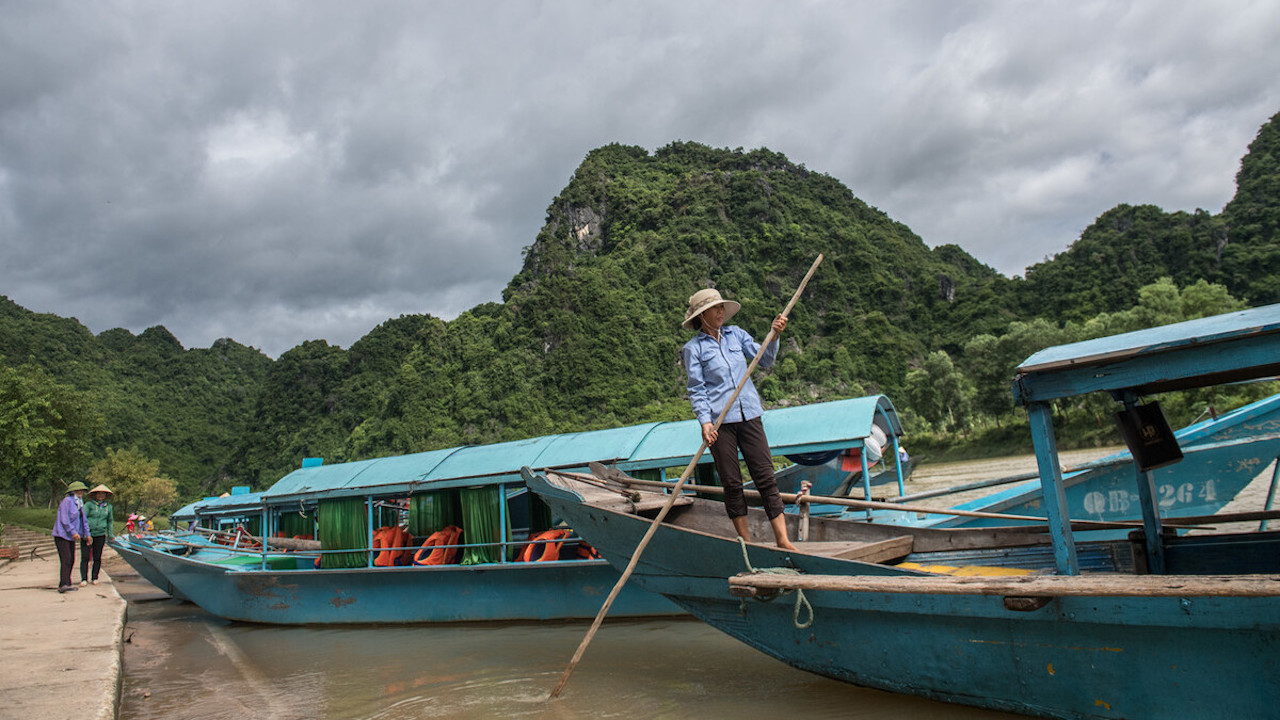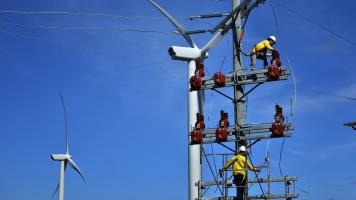
With travelers becoming more conscious of their environmental and social impacts, there is a market-driven shift toward more sustainable tourism, including nature- and culture-based travel. Photo credit: ADB.
Opportunities are emerging for net-zero tourism as travelers demand sustainable options and are willing to spend more to shrink their carbon footprint.
With international travel projected to reach 80%–95% of pre-pandemic levels in 2023 as predicted by the United Nations World Tourism Organization (UNWTO), new opportunities are emerging for net-zero travel as consumers in Asia and the Pacific now demand sustainable tourism options.
Airports Council International Asia–Pacific Director General Stefano Baronci indicated that regional air traffic has already recovered by 70%–80% and is expected to reach pre-pandemic level by next year. “We will continue to grow significantly—2.6 times what we were handling in 2019 up to 2040—with the more than three billion people that will be moving across the region, and from other regions to Asia,” he said during a breakout session at the Asian Development Bank’s (ADB) Southeast Asia Development Symposium (SEADS) 2023 on 30 March. “This, of course, has an impact on the emissions that we generate.”
The session, “Ecotourism 2.0–Navigating the Transition to Net Zero,” was co-organized by ADB, Visa, and the Pacific Asia Travel Association (PATA). Speakers discussed tourism’s rebound in the context of the region’s net-zero ambition, ASEAN's push for a more sustainable tourism, and the shift in travelers’ priorities and preferences.
Sustainability is the #1 trend
With travelers becoming more conscious of their environmental and social impacts, there is a market-driven shift toward more sustainable tourism, including nature- and culture-based travel.
Visa Vice-President for Inclusive Impact and Sustainability Patsian Low cited several studies conducted by Visa and other organizations showing that more than 90% of travelers in Asia and the Pacific are willing to make sacrifices—and spend more—to become sustainable travelers post-COVID-19.
Based on the 2022 Sustainable Travel Study by the Expedia Group, Asia–Pacific exhibited a stronger appetite for sustainable travel: 95% of travelers in the region indicated interest in sustainable travel options, compared to the Americas at 74%, and Europe at 69%. Moreover, travelers in the region wish to avoid crowded destinations, and travel more frequently to less popular rural locations. According to the same study, 74% of consumers would choose a destination, lodging, or transportation option that is committed to supporting the local community and culture, even if it were more expensive.
“Most of APAC [Asia–Pacific] consumers said that they’ll be willing to pay more for sustainable food and activities, closely followed by additional transportation and lodging options,” said Low. “So, the opportunity for us to work with travelers that are keen to become sustainable in their practices is very high.”
Sustainable travel ushers in opportunities
In response to the market demand, industry players as well as destinations in the region are moving toward sustainable travel, from digitalization to destination management. The entire travel and tourism ecosystem offers opportunities for a net-zero future, said Low, including green payment systems and value-added services and incentives for travelers. Visa, for one, has launched an eco benefits program allowing cardholders to utilize a carbon footprint calculator, avail of carbon offsets, and provide charitable contributions to environmental organizations.
The hotel sector, which accounts for 1% of global carbon emissions according to the UNWTO, is also making the shift. A JLL report indicates that state interventions can spur a transformation toward more sustainable accommodations. The Singapore Tourism Board and the Singapore Hotel Association’s Hotel Sustainability Roadmap require hotels to track and reduce their emissions by 2030, with a view to achieving net-zero emissions by 2050. Starting this year, the City of Sydney is also requiring new hotels to comply with minimum energy ratings to meet net-zero emissions by 2035.
Green air travel, meanwhile, is being pushed by such alliances as the Clean Skies for Tomorrow Coalition, which provides a mechanism for the shift to sustainable aviation fuels. Airlines are also joining early-stage sustainable aviation fuel projects, among them the Qantas Group, Cathay Pacific, All Nippon Airways, and Singapore Airlines. The International Air Transport Association (IATA) has also launched IATA CO2 Connect to improve transparency on carbon emissions data, which may be integrated into flight booking tools.
More cooperation, partnerships needed
Baronci said airports are doing their part by shrinking their carbon footprint. He said some airports are now using LED systems and green power as well as electric transport. Airports Council International has also introduced a carbon accreditation program, with close to 60 airports in Asia–Pacific being recognized for their achievements in carbon management. However, he remarked that further dialogue is needed with the airlines and regulators to discuss additional initiatives, given the projected growth in air travel up to 2040.
“Even in a kind of business-as-usual scenario where improvements are incrementally added over the years based on the current technology, we risk still to have an excess of emissions that we will not be able to offset. So, this means that more investments are needed, that more partnerships have to be created,” said Baronci.
United Nations Environment Programme Asia and the Pacific Office Regional Director and Representative Dechen Tsering said the transition to net zero should include tourism. “If you look at a business-as-usual scenario for tourism, by 2050, we'd have 154% increase in energy use, 131% increase in greenhouse gas emissions, 152% increase in water consumption, 251% [increase] in solid waste disposal… The tourism sector is critical,” she said. “[But] if you don't have environmental sustainability, you're not going to have tourism.”
Ecotourism 2.0 must be a community effort
Nomad Plastic Managing Director Jean-Baptiste Grassin said working with the local community to solve local issues, such as building a plastic waste collection program, can also ensure the tourism enterprise leaves a positive impact. “Trying to solve with them the local problems can be a way also to interact and build something a bit more resilient,” said Grassin, whose social enterprise develops collaborative and regenerative projects to end plastic pollution and give back to nature. He also suggested offering off-the-beaten-path destinations to decongest tourist centers.
Baronci and Tsering cautioned against taking a “top-down” approach, emphasizing that consultations must be done with stakeholders. Tsering said that this means including local communities, to ensure that they are involved in the process and will truly benefit from ecotourism. Low also spoke about having teamed up with PATA to empower local businesses with digital tools to engage with digitally native travelers and better evaluate the impacts of tourism.
Teaching people to emulate how indigenous communities interact with nature can also help tourists navigate through natural destinations with greater sensitivity and care. “How can destinations work with these communities to actually elevate this knowledge that can be further integrated into the experience with visitors?” Tsering asked. She said that managing the footprint visitors leave behind on local communities means that solutions, frameworks, and responses should also come from the local community.
“As ecotourism gains popularity, and climate change concerns grow, the urgency to move toward Ecotourism 2.0 and net zero is clear,” said PATA Sustainability and Social Responsibility Program Head Pavnesh Kumar during the session “Stakeholders must work together to shape a more sustainable and responsible future for the travel industry.”

